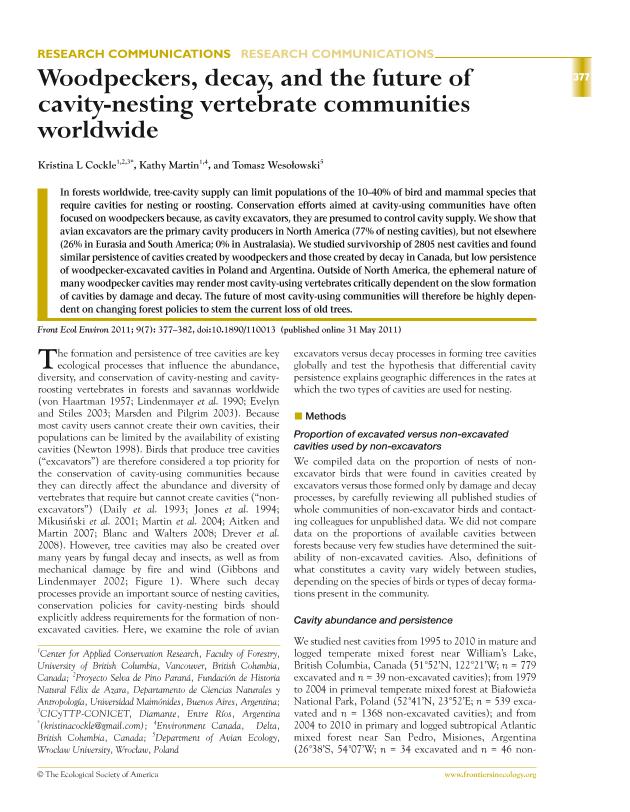Artículo
Woodpeckers, decay, and the future of cavity-nesting vertebrate communities worldwide
Fecha de publicación:
09/2011
Editorial:
Ecological Society of America
Revista:
Frontiers in Ecology and the Environment
ISSN:
1540-9295
Idioma:
Inglés
Tipo de recurso:
Artículo publicado
Clasificación temática:
Resumen
In forests worldwide, tree-cavity supply can limit populations of the 10-40% of bird and mammal species that require cavities for nesting or roosting. Conservation efforts aimed at cavity-using communities have often focused on woodpeckers because, as cavity excavators, they are presumed to control cavity supply. We show that avian excavators are the primary cavity producers in North America (77% of nesting cavities), but not elsewhere (26% in Eurasia and South America; 0% in Australasia). We studied survivorship of 2805 nest cavities and found similar persistence of cavities created by woodpeckers and those created by decay in Canada, but low persistence of woodpecker-excavated cavities in Poland and Argentina. Outside of North America, the ephemeral nature of many woodpecker cavities may render most cavity-using vertebrates critically dependent on the slow formation of cavities by damage and decay. The future of most cavity-using communities will therefore be highly dependent on changing forest policies to stem the current loss of old trees.
Palabras clave:
Decay
,
Tree Cavities
,
Woodpeckers
Archivos asociados
Licencia
Identificadores
Colecciones
Articulos(CICYTTP)
Articulos de CENTRO DE INV.CIENT.Y TRANSFERENCIA TEC A LA PROD
Articulos de CENTRO DE INV.CIENT.Y TRANSFERENCIA TEC A LA PROD
Citación
Cockle, Kristina Louise; Martin, Kathy; Wesołowski, Tomasz; Woodpeckers, decay, and the future of cavity-nesting vertebrate communities worldwide; Ecological Society of America; Frontiers in Ecology and the Environment; 9; 7; 9-2011; 377-382
Compartir
Altmétricas




